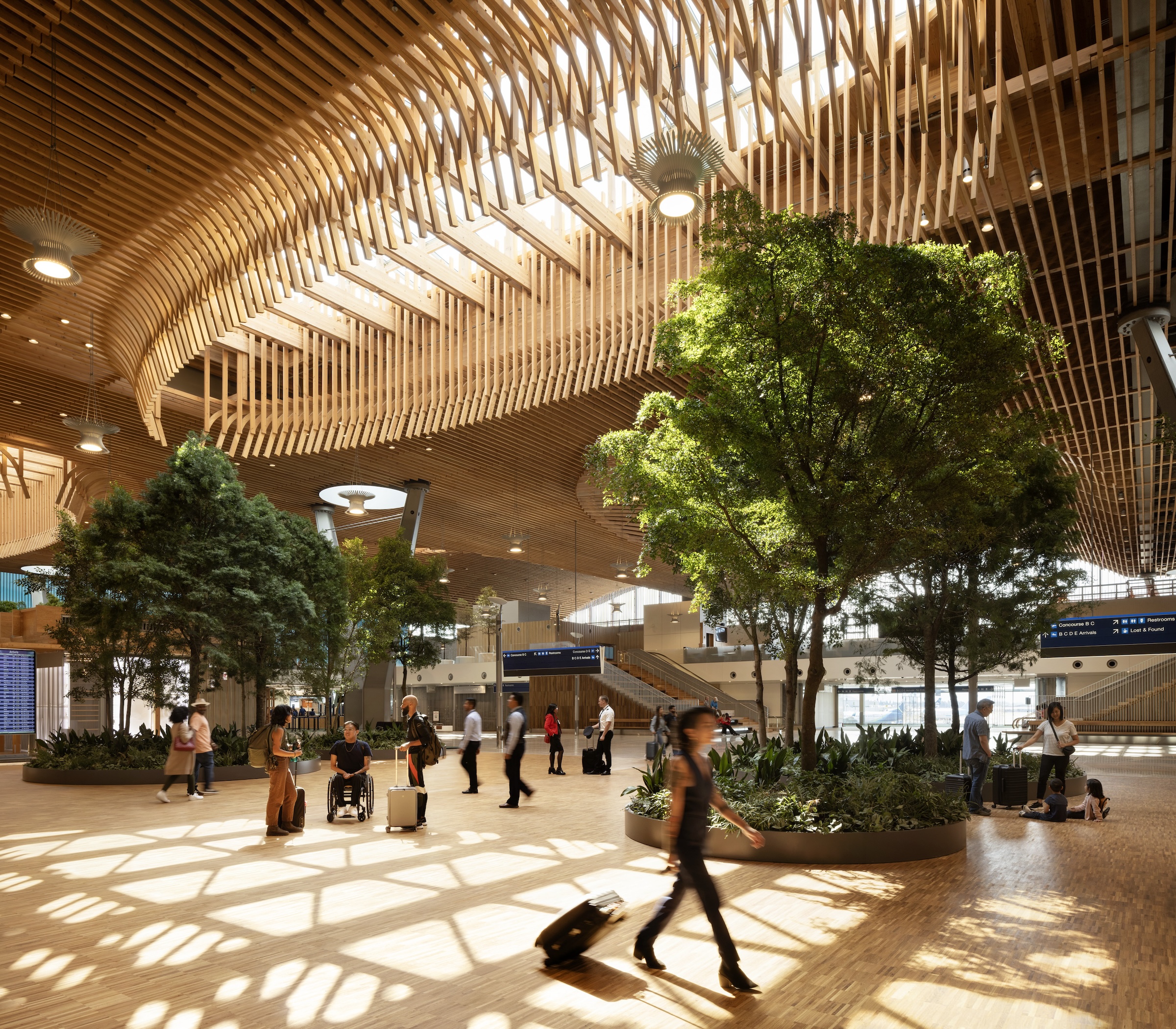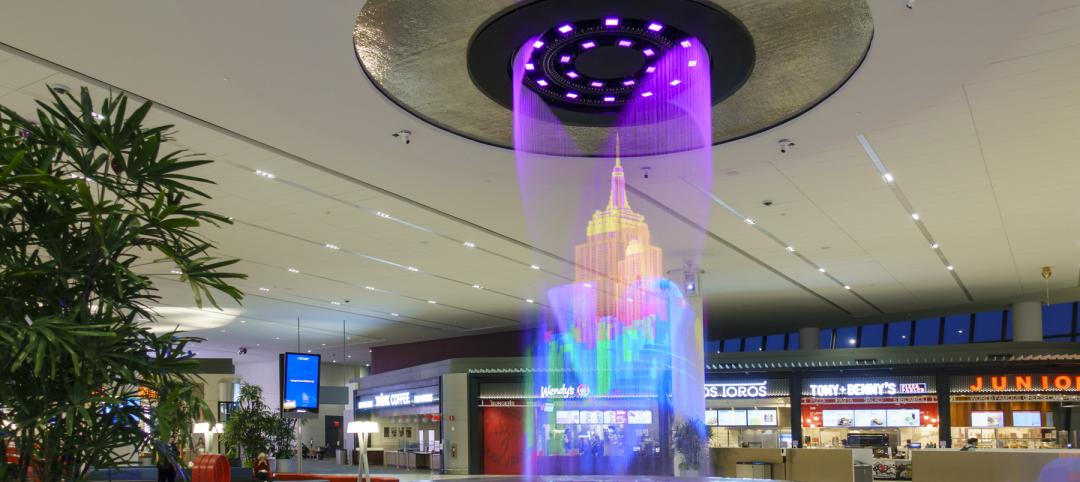This month, the Portland International Airport (PDX) main terminal expansion opened to passengers. Designed by ZGF for the Port of Portland, the one-million-sf project doubles the capacity of PDX and enables the airport to welcome 35 million passengers per year by 2045.
With a nine-acre mass timber roof, the $2 billion terminal renovation-expansion is the largest mass timber project of its kind, according to a press statement from ZGF.
The new terminal aims to evoke the experience of walking through a Pacific Northwest forest. The terminal offers views of the airfield, abundant natural light, and interior landscapes that suggest the region’s natural beauty. Designed at a neighborhood scale, the project features intimate plazas with tree-lined retail concessions and plant-filled gathering places.
“Everybody loves Portland International Airport,” Gene Sandoval, ZGF partner, said in the statement. “We had a tall order to evolve a terminal that’s essentially multiple buildings pieced together since the 1950s—and double the capacity while designing an experience passengers and employees will love as much as the original.”
As the expansion’s centerpiece, the prefabricated wood roof spans the expanded lobby, check-in, and security areas. The 3.5 million board feet of wood for the roof—as well as wood concessions, flooring, and feature walls—was sourced from within a 300-mile radius of PDX and includes wood from small family-owned forests, nonprofits, and tribal nations.
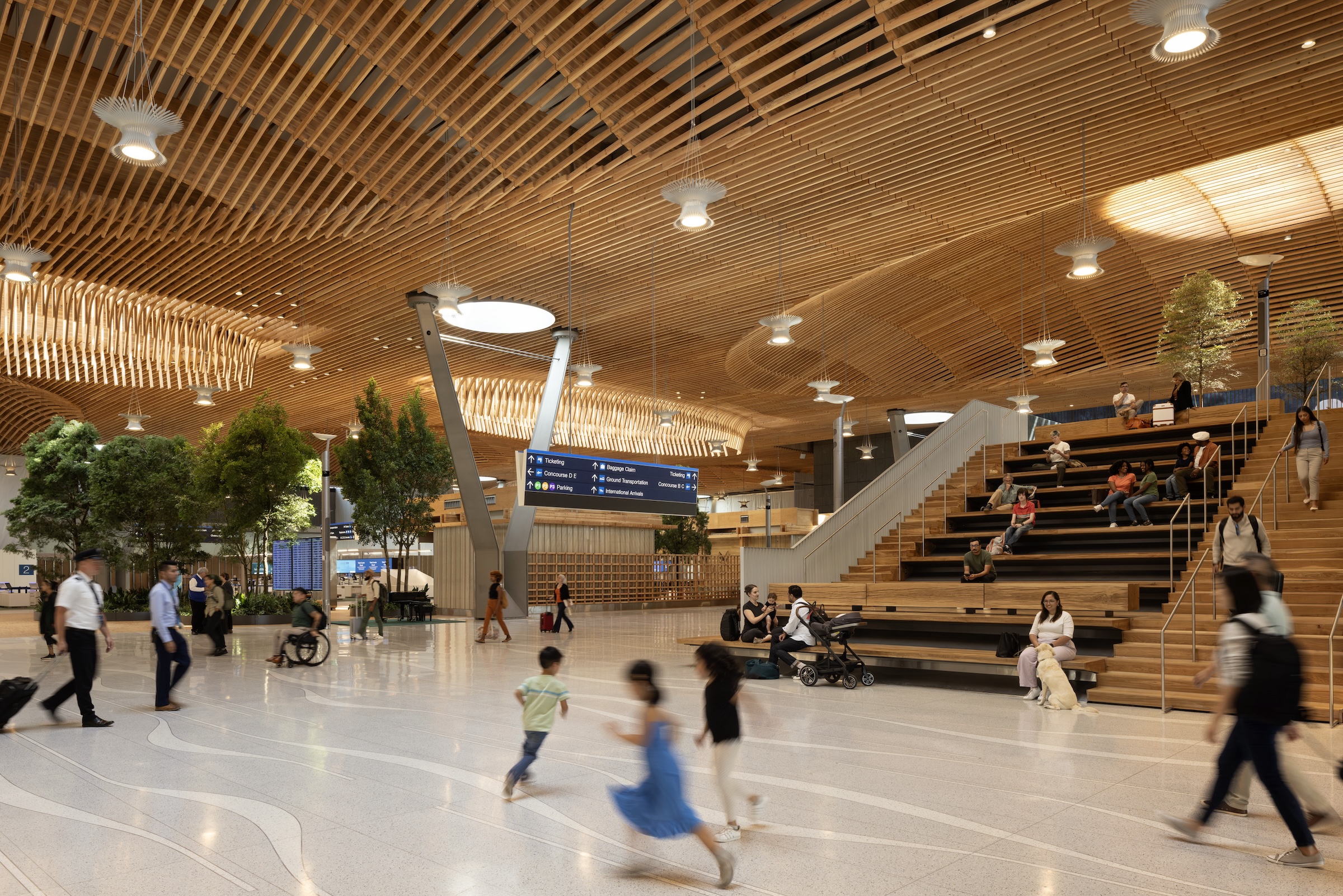
The Port of Portland and ZGF decided to renovate and expand in place instead of building an entirely new terminal. This approach helped achieve schedule and time savings in addition to a 70% reduction in embodied carbon compared to building new. The airport remained fully operational throughout five years of phased construction.
“The design evokes the best of our region yet offers other airports a new model for how to expand and renovate in place to meet the travel demands of the future generations,” Sharron van der Meulen, ZGF managing partner, said in the statement.
While doubling capacity, the main terminal achieves a 50% reduction in energy use per square foot with an all-electric ground-source heat pump. With resilient design strategies, the terminal can withstand a 9.0 magnitude earthquake.
A second project phase, now underway, will finish in early 2026, providing more retail and dining amenities as well as exit lanes on the north and south sides of the terminal.
On the Building Team:
Client: Port of Portland
Architect of record and interior designer: ZGF
Structural engineer: KPFF Consulting Engineers (primary), Arup
MEP engineer: PAE Engineers (primary), Arup
Geotechnical engineer: GRI
Civil engineer and airside planning: HNTB
General contractor: Hoffman Skanska Joint Venture
Pre-construction services: Turner Construction
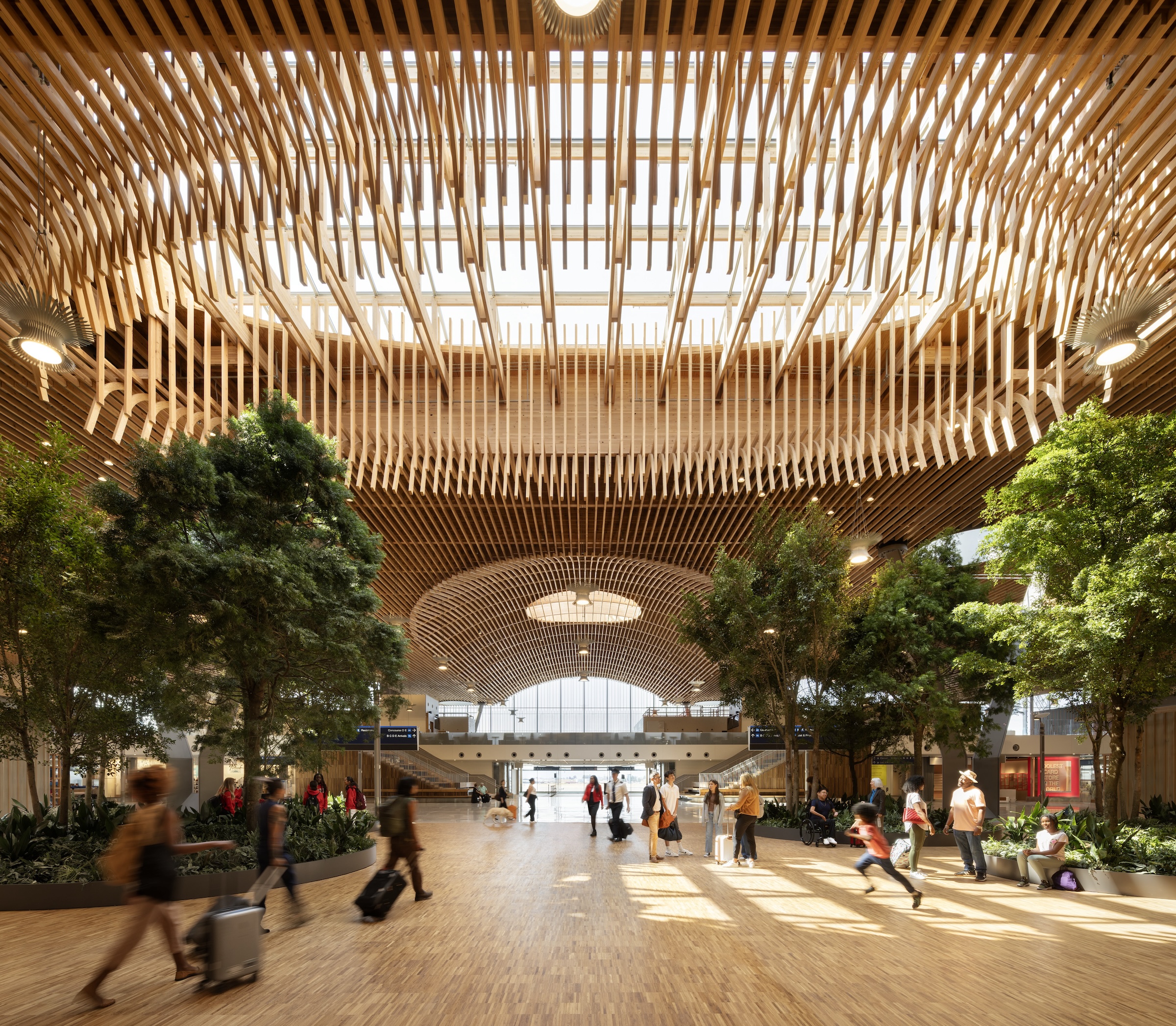
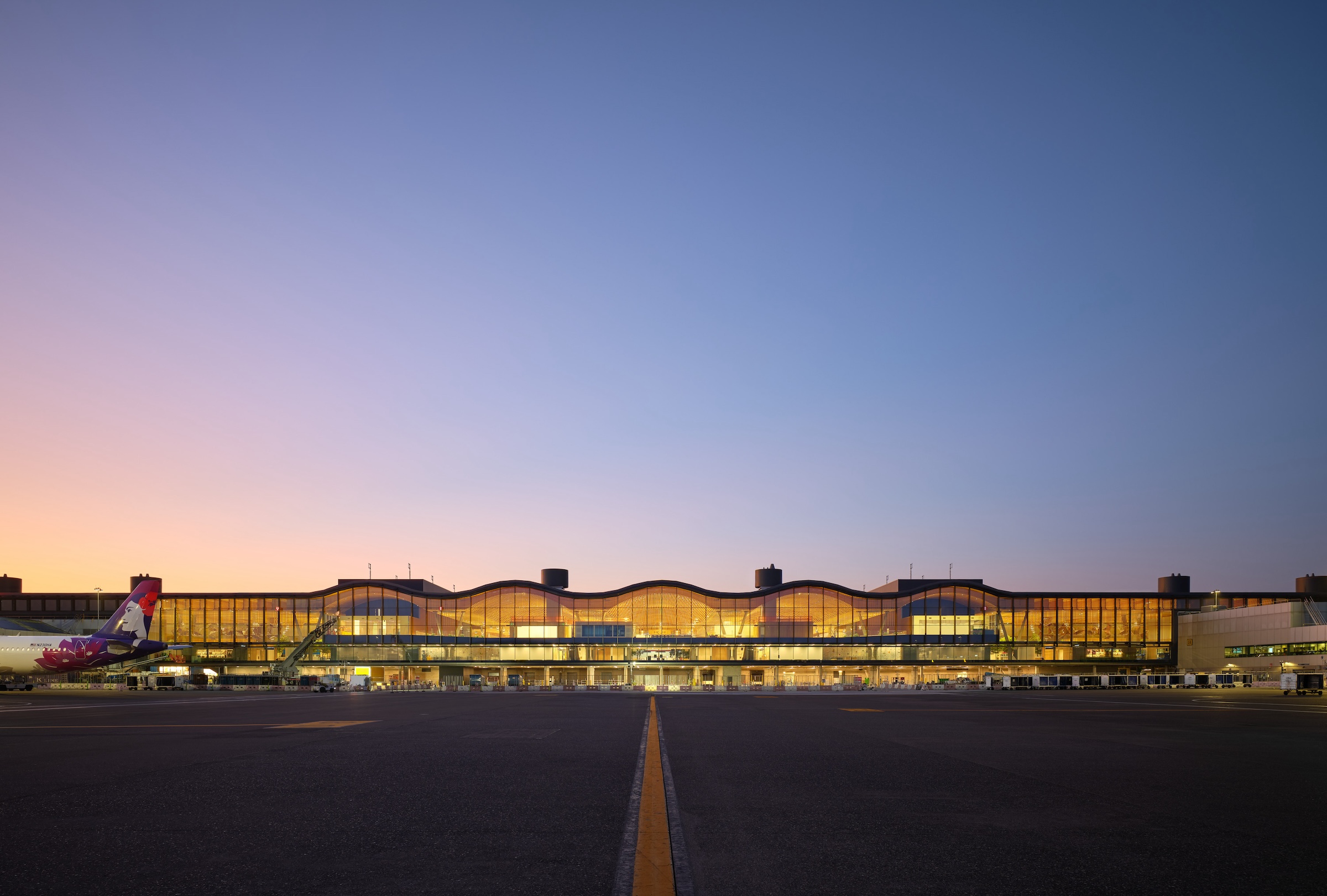
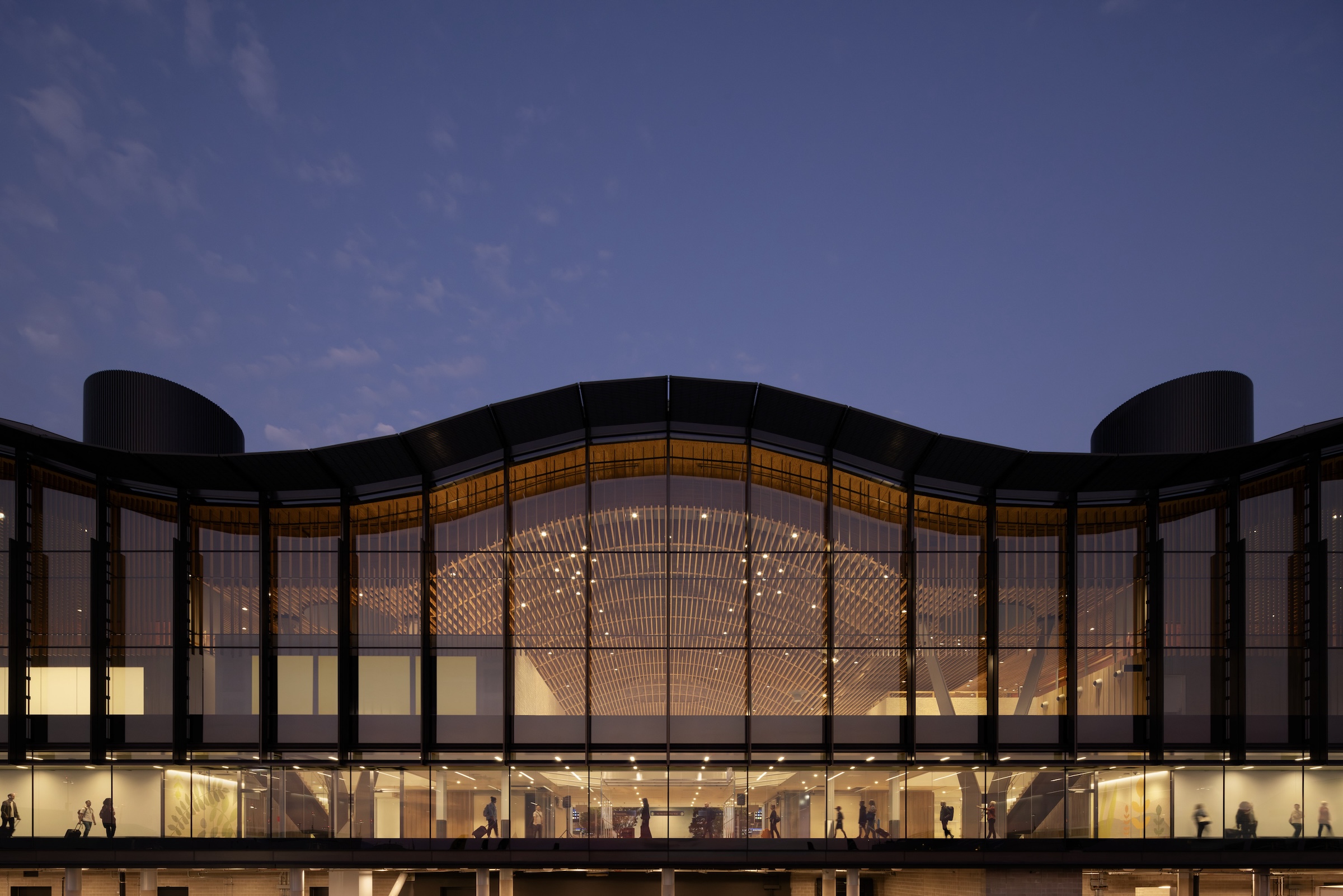
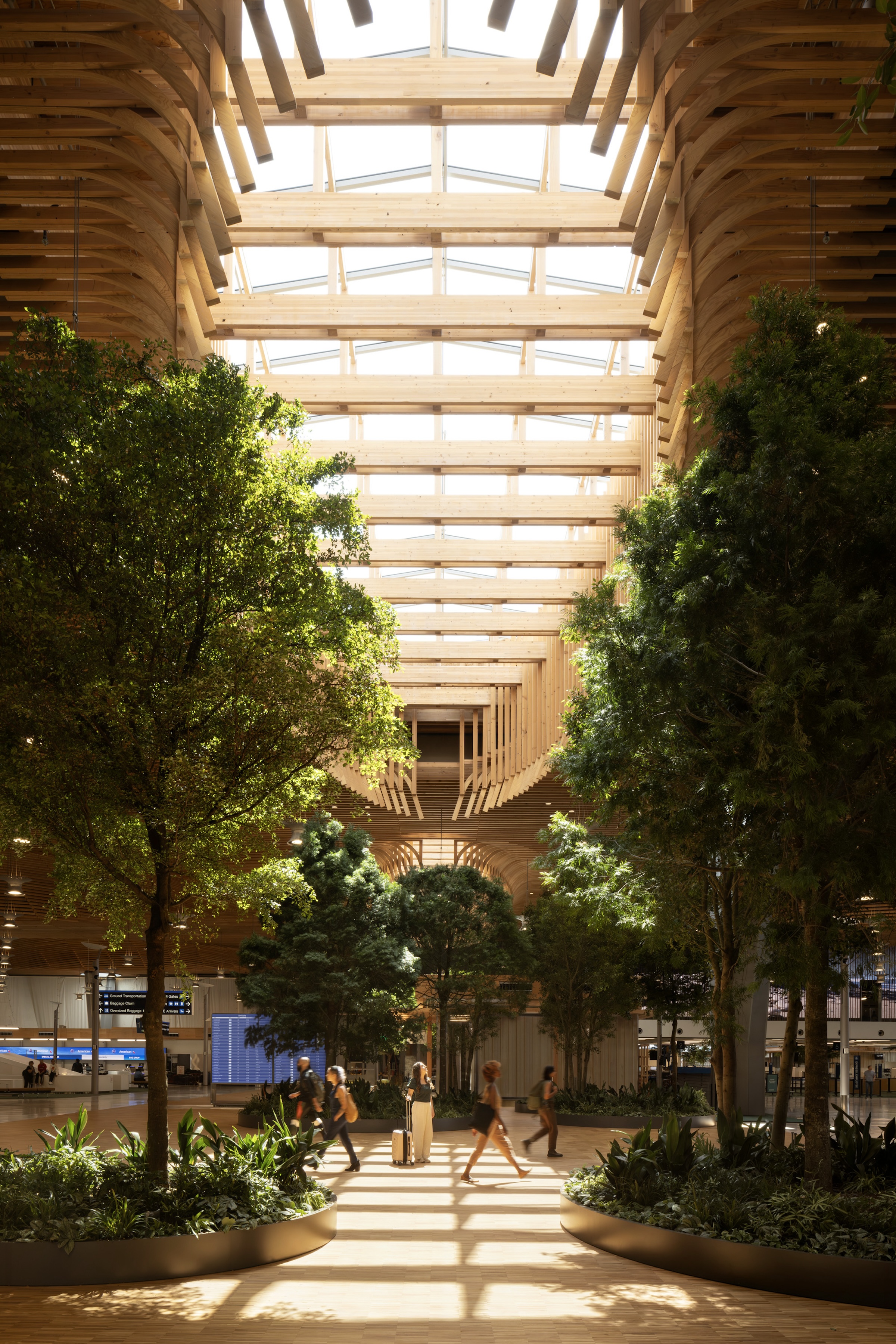

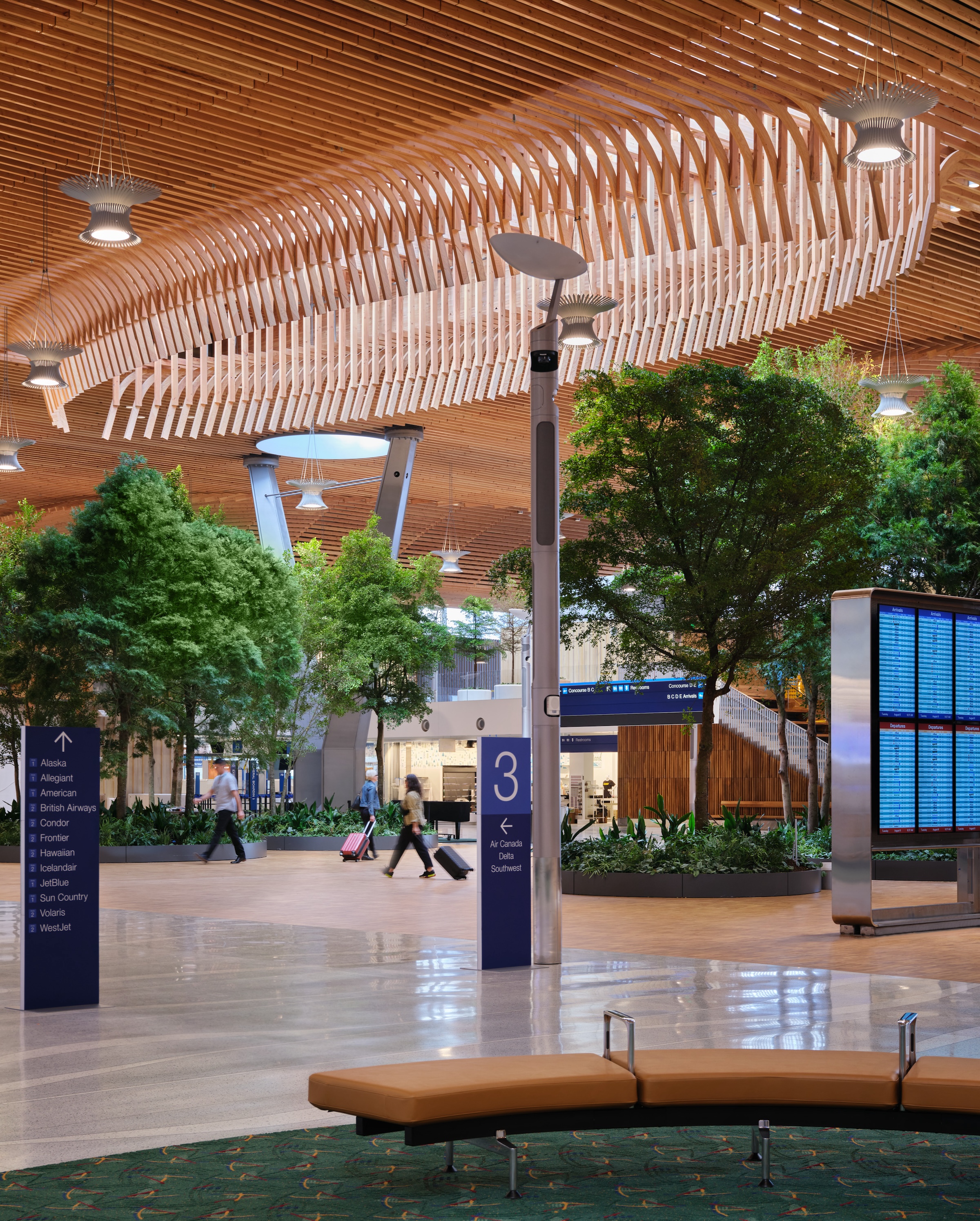

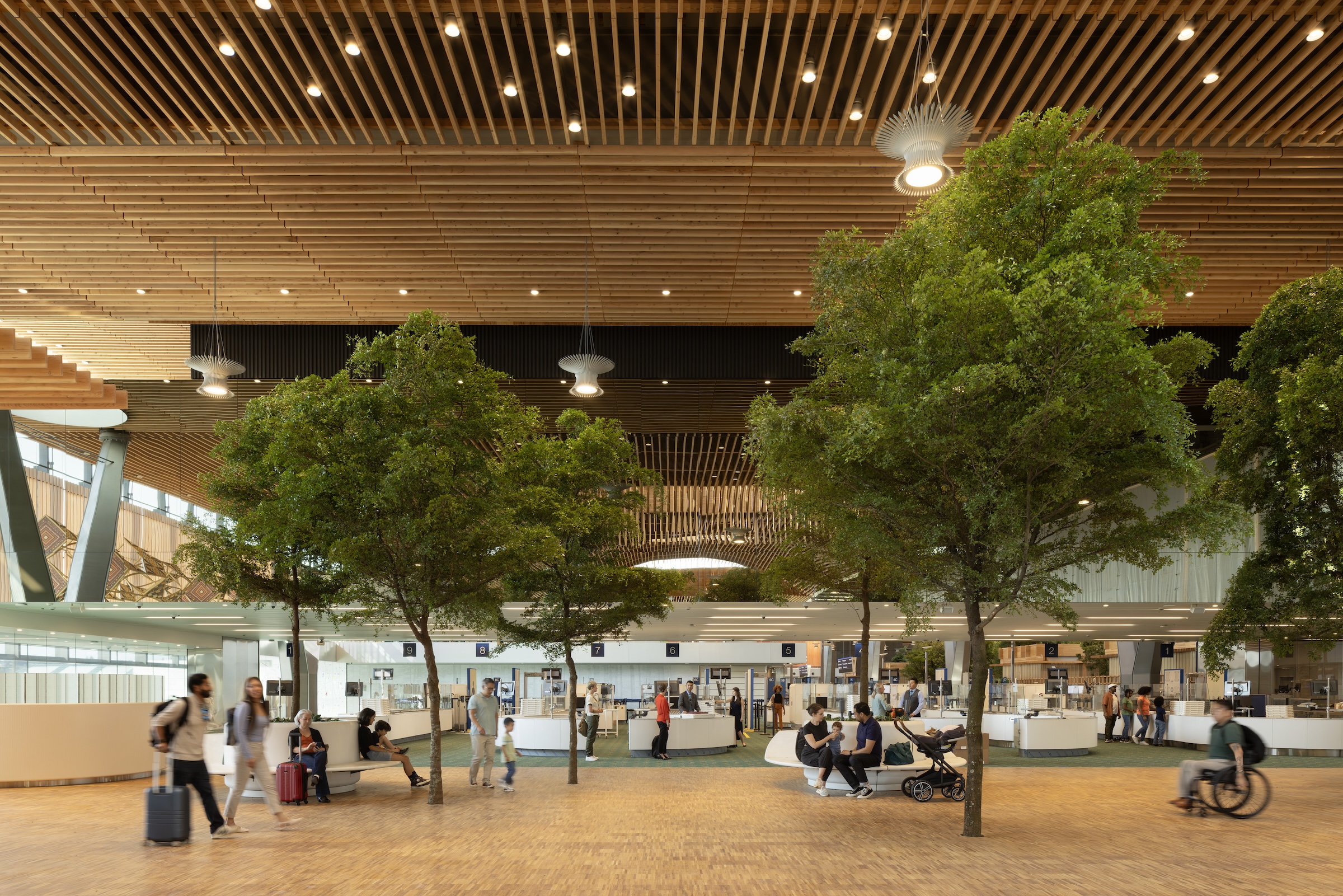
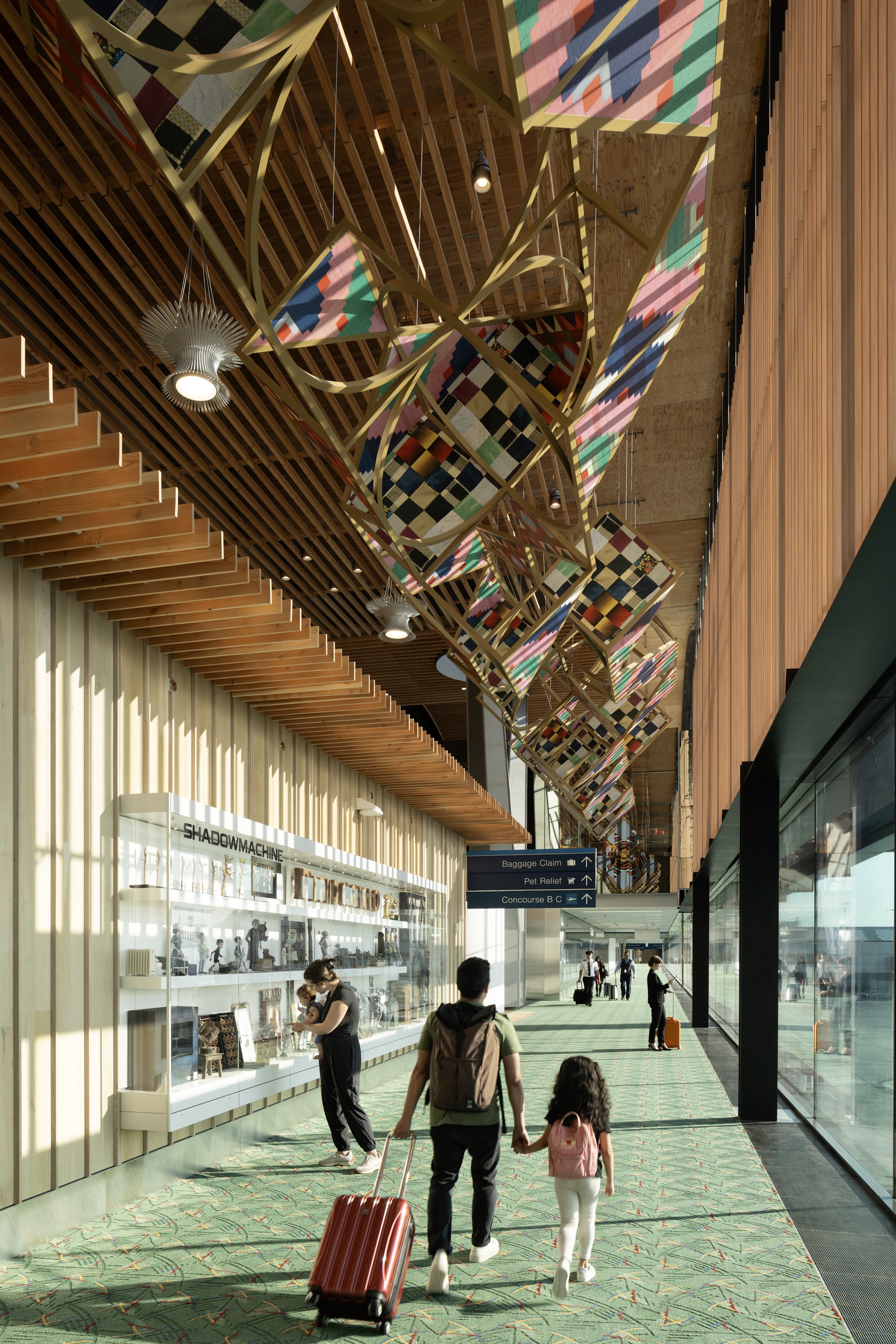
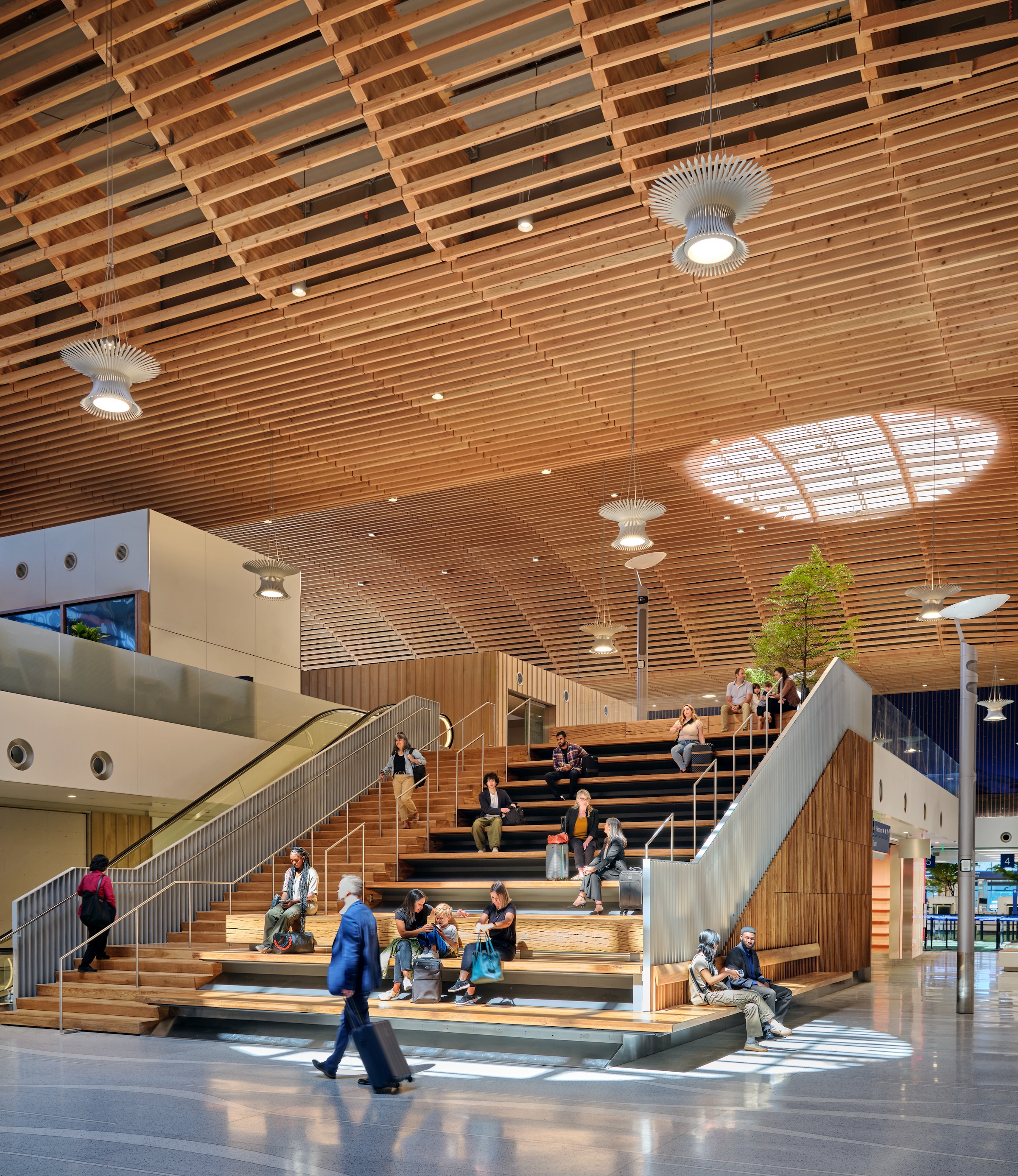

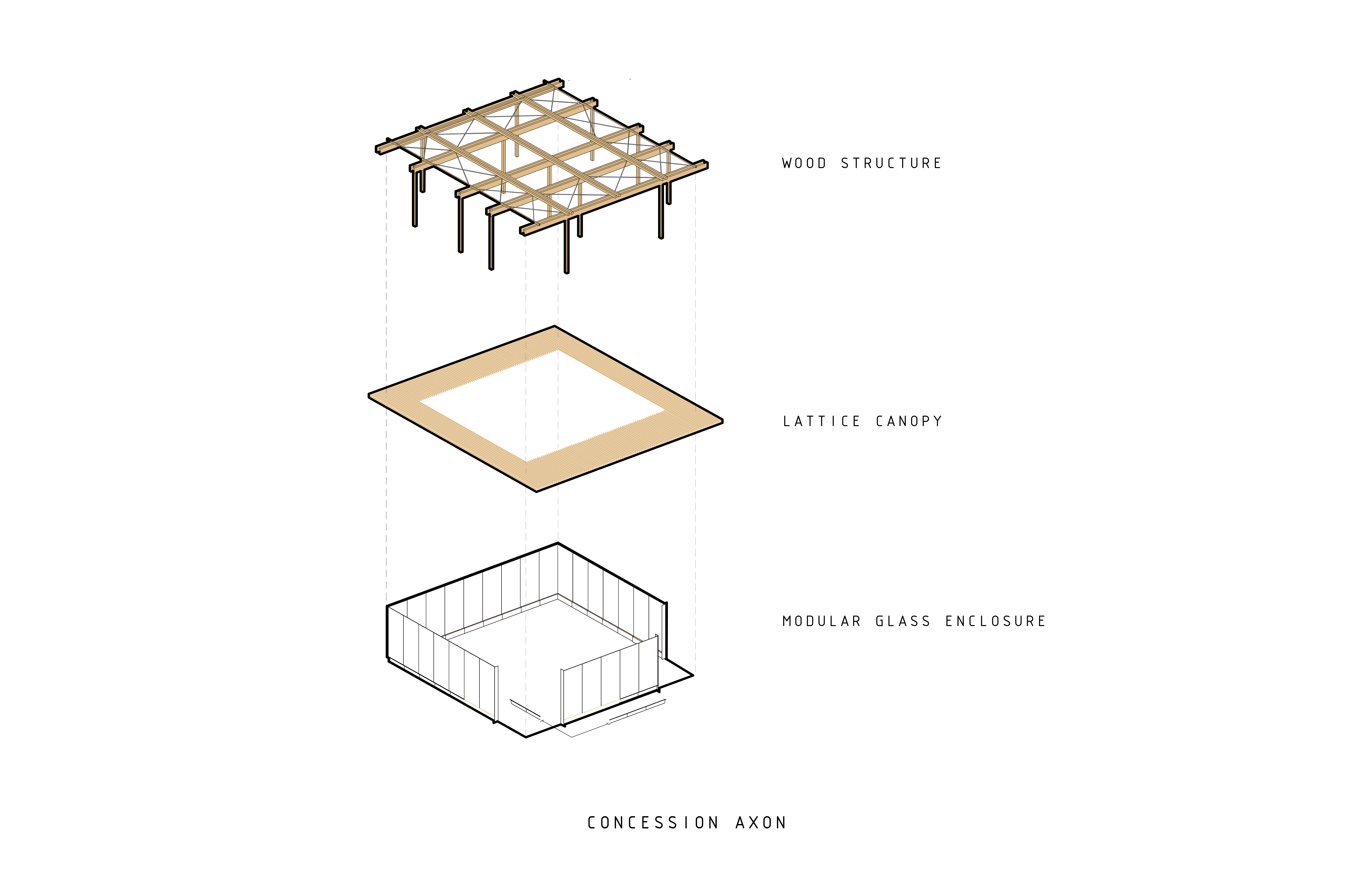
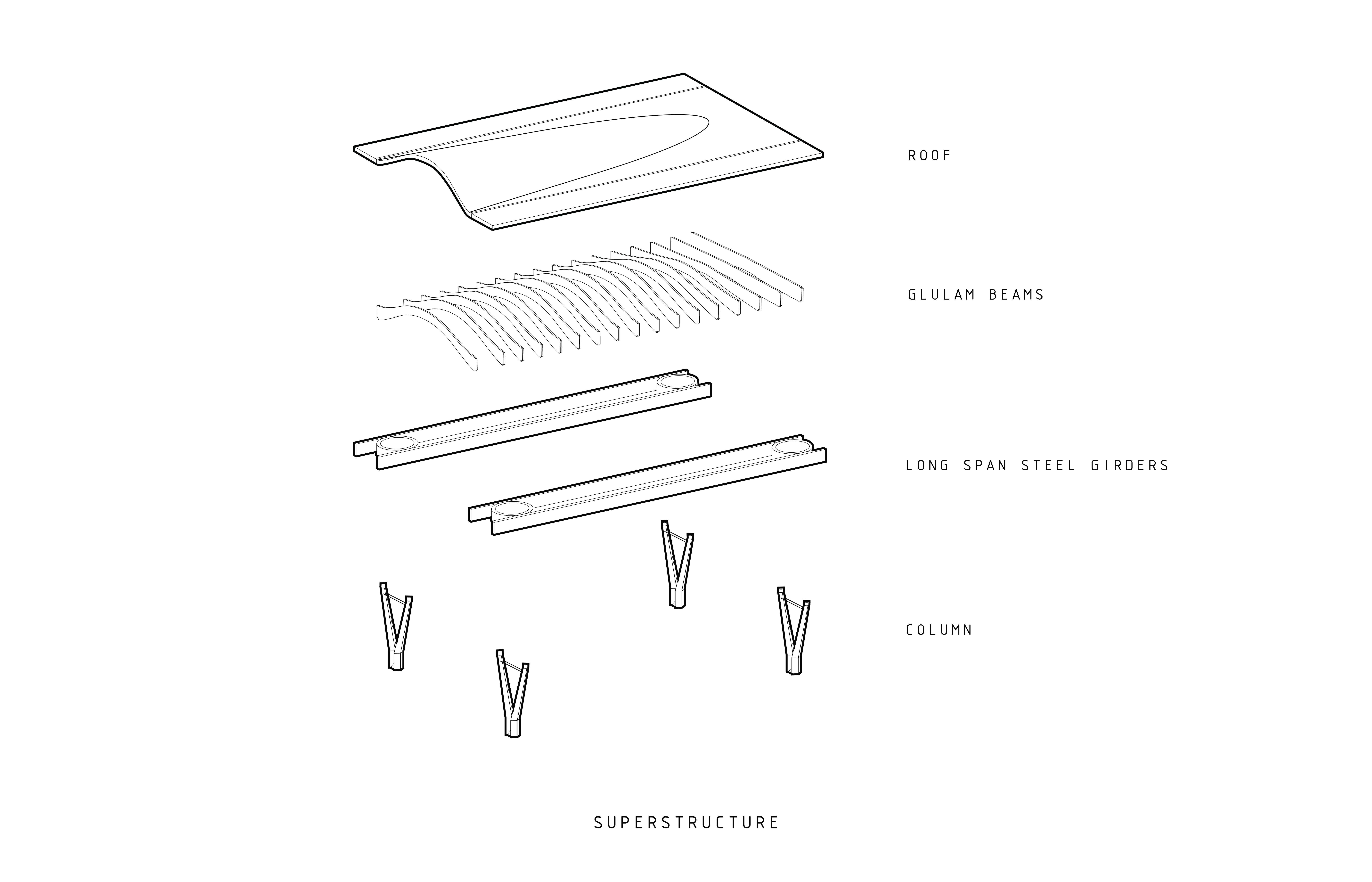

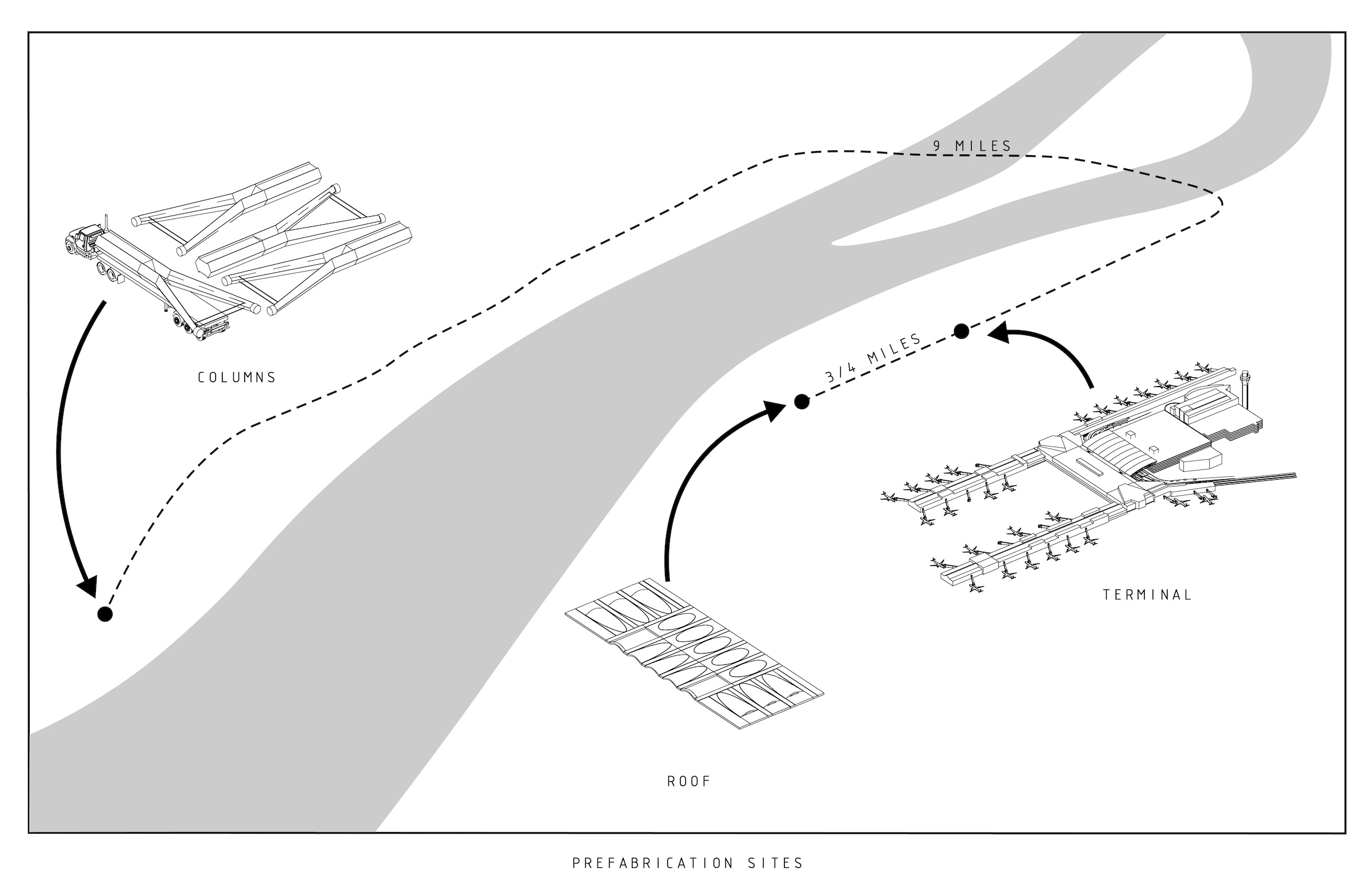
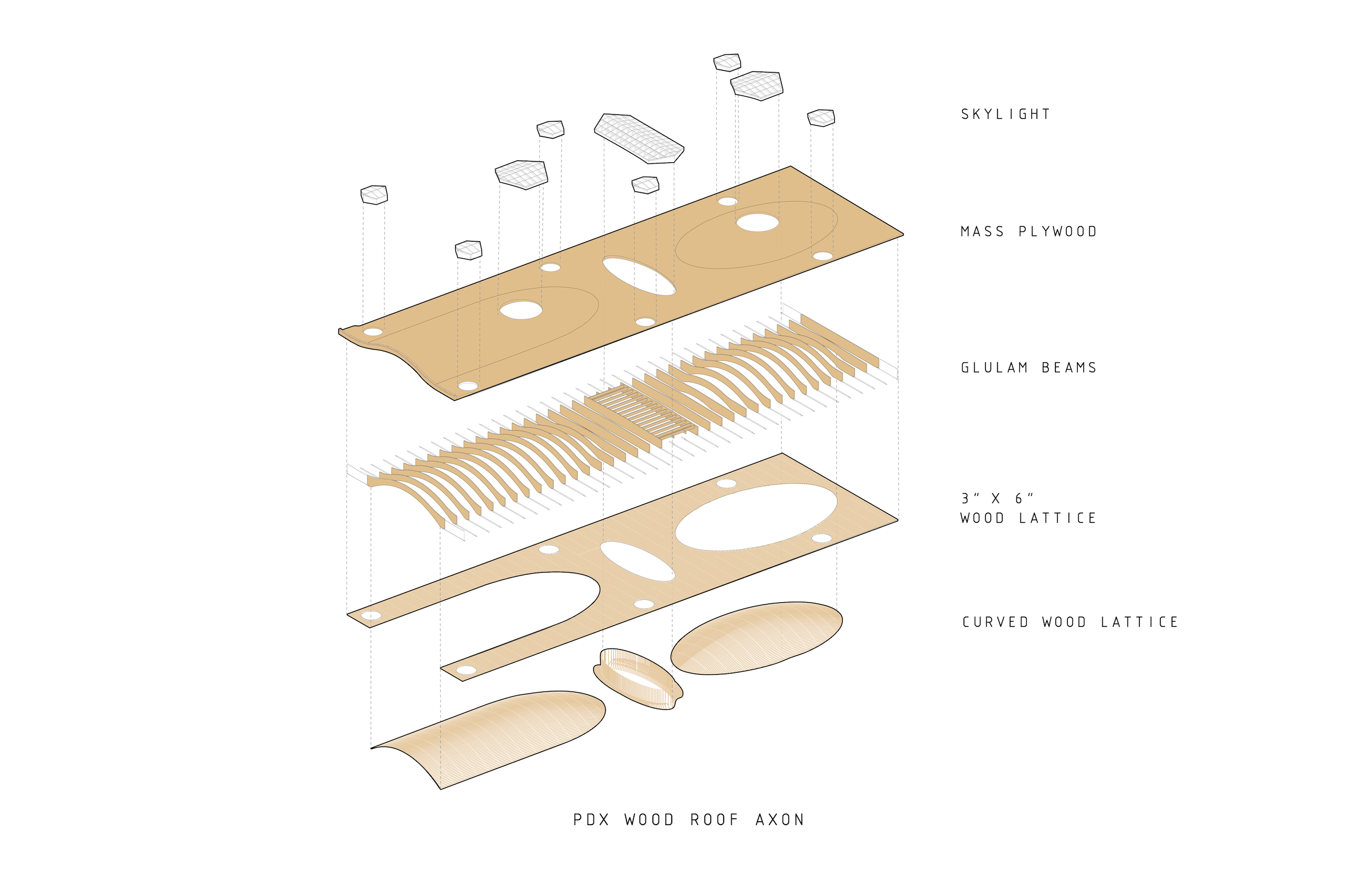
Related Stories
Sponsored | BD+C University Course | May 3, 2022
For glass openings, how big is too big?
Advances in glazing materials and glass building systems offer a seemingly unlimited horizon for not only glass performance, but also for the size and extent of these light, transparent forms. Both for enclosures and for indoor environments, novel products and assemblies allow for more glass and less opaque structure—often in places that previously limited their use.
Airports | Apr 4, 2022
Dominican Republic airport expansion will add mixed-use features
The recently revealed design concept for the expansion of Santiago International Airport in the Dominican Republic includes a transformation of the current building into a mixed-use space that features an office park, business center, and hotel.
Codes and Standards | Mar 4, 2022
FAA offers $1 billion in grants for airport terminal and tower projects
The Federal Aviation Administration (FAA) is now accepting applications for about $1 billion in grants for airport projects during fiscal year 2022.
Resiliency | Feb 15, 2022
Design strategies for resilient buildings
LEO A DALY's National Director of Engineering Kim Cowman takes a building-level look at resilient design.
Sponsored | Resiliency | Jan 24, 2022
Blast Hazard Mitigation: Building Openings for Greater Safety and Security
Coronavirus | Jan 20, 2022
Advances and challenges in improving indoor air quality in commercial buildings
Michael Dreidger, CEO of IAQ tech startup Airsset speaks with BD+C's John Caulfield about how building owners and property managers can improve their buildings' air quality.
Giants 400 | Oct 22, 2021
2021 Airport Sector Giants: Top architecture, engineering, and construction firms in the U.S. airport facilities sector
AECOM, Hensel Phelps, PGAL, and Gensler top BD+C's rankings of the nation's largest airport sector architecture, engineering, and construction firms, as reported in the 2021 Giants 400 Report.
| Oct 14, 2021
The future of mass timber construction, with Swinerton's Timberlab
In this exclusive for HorizonTV, BD+C's John Caulfield sat down with three Timberlab leaders to discuss the launch of the firm and what factors will lead to greater mass timber demand.
Giants 400 | Aug 30, 2021
2021 Giants 400 Report: Ranking the largest architecture, engineering, and construction firms in the U.S.
The 2021 Giants 400 Report includes more than 130 rankings across 25 building sectors and specialty categories.
Resiliency | Aug 19, 2021
White paper outlines cost-effective flood protection approaches for building owners
A new white paper from Walter P Moore offers an in-depth review of the flood protection process and proven approaches.


